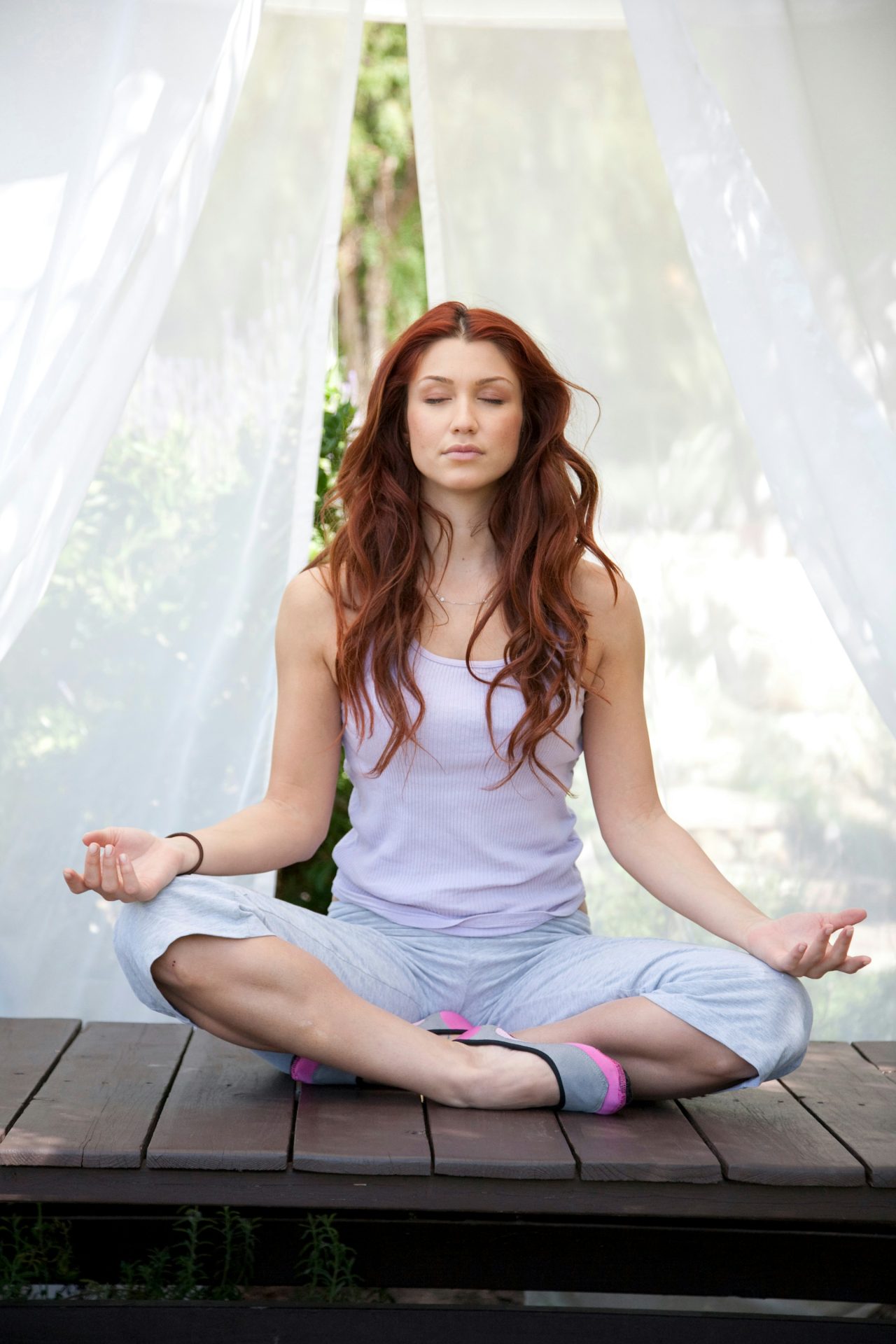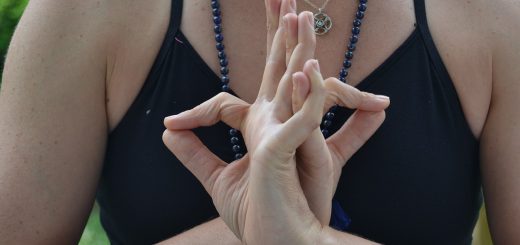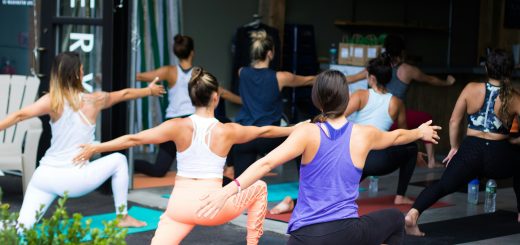Twist and Detox: Seated Spinal Twist Yoga Poses

Before diving in, please note: This post is for informational purposes only. If you’d like to know more about how we approach topics, feel free to check out our friendly Disclaimer Page.
Hey there, amazing readers! 🖐️ Just a quick note: yes, we know there are a lot of ads here. Trust us, we get it—it’s not the prettiest look, but they help us keep this blog alive and kicking. Those pesky little ads cover the costs of all the behind-the-scenes magic, from hosting and tech stuff to creating content we hope you’ll love.
We’re committed to delivering quality posts, and your support (even just sticking around despite the ads) means everything to us. So, bear with us, and thanks for helping us keep the good vibes rolling. Now, on to the fun stuff! 😉
TRANSLATE BUTTON AT THE END OF THE ARTICLE
Overview
Seated spinal twist yoga poses are a fundamental part of any yoga practice, offering a range of benefits for both the body and mind.
These poses involve twisting the spine while remaining seated, which helps to improve flexibility, strengthen the core, mobilize the spine, and detoxify the body.
In addition, seated twists promote digestion, increase vitality, and enhance overall gut health.
However, it is important to approach these poses with caution and follow proper alignment to avoid injury.
In this article, we will explore the benefits, variations, techniques, and precautions associated with seated spinal twist yoga poses.
Benefits and Importance of Seated Spinal Twist Yoga Poses
Seated spinal twist yoga poses offer numerous benefits for the body and mind.
Some of the key advantages include:
Improved Flexibility: Seated twists help to increase the flexibility of the spine, hips, and shoulders.
Regular practice can gradually enhance the range of motion in these areas.
Strengthened Core: These poses engage the core muscles, including the abdominals and obliques, leading to improved core strength and stability.
A strong core also supports better posture and reduces the risk of back pain.
Mobilized Spine: By twisting the spine in different directions, seated twists help to mobilize the vertebrae, improving spinal health and relieving stiffness.
Increased Vitality: The twisting action in these poses stimulates the energy centers in the body, known as chakras, and helps to increase vitality and awaken dormant energy.
Enhanced Digestion: Seated twists promote healthy digestion by stimulating the abdominal organs, improving blood flow, and increasing the efficiency of the digestive system.
Detoxification: Through compression and release, seated spinal twists facilitate the detoxification process by stimulating the organs responsible for eliminating toxins from the body.
Improved Concentration: The concentration required to maintain balance and alignment during seated twists helps to calm the mind and improve focus.
Preparation: Setting Up a Comfortable Seated Pose
Before delving into the seated spinal twist yoga poses, it is essential to establish a comfortable seated position.
Here’s how to prepare:
Find a quiet space: Choose a quiet and peaceful area to practice where you can focus without distractions.
Use a yoga mat or cushion: Sit on a yoga mat or cushion to create a soft and supportive base for your seated pose.
Sit with an erect spine: Ensure that your spine is straight and aligned by sitting on the edge of the cushion or mat, with your sit bones rooted firmly on the surface.
Relax the shoulders: Let your shoulders drop away from your ears and soften any tension in the neck and upper back.
Engage the core: Gently engage your core by drawing the navel towards the spine.
This will help to support your back and maintain stability during the twists.
Establish a comfortable cross-legged position: Choose a cross-legged position that feels comfortable for you.
Options include the easy pose (Sukhasana) or half-lotus pose (Ardha Padmasana).
Take deep breaths: Start by taking a few deep breaths, inhaling through the nose and exhaling through the mouth, to relax the body and prepare for the practice.
Step-by-Step Guide: Performing Basic Seated Spinal Twist Pose
The basic seated spinal twist pose, also known as Ardha Matsyendrasana, can be performed as follows:
Sit in a comfortable cross-legged position: Begin by sitting with an upright spine in your chosen cross-legged position.
Extend your spine: Inhale deeply and elongate your spine, lifting the crown of your head towards the ceiling.
Place your right hand behind you: On an exhale, place your right hand on the floor or mat behind your back, with your fingers pointing towards your spine.
Hug your left knee: Inhale and lift your left arm straight up, then exhale and hug your left knee with your left arm.
Twist to the right: On an exhale, gently twist your torso to the right, using your left arm as leverage against your left knee.
Look over your right shoulder: Turn your head to the right, looking over your right shoulder.
Maintain a comfortable gaze and avoid straining the neck.
Hold the pose: Stay in this position for 5-10 breaths, allowing the twist to deepen with each exhale.
Release and repeat: On an inhale, slowly release the twist, coming back to center.
Repeat the pose on the opposite side, starting with your left hand behind you and hugging your right knee with your right arm.
Variations: Exploring Different Seated Spinal Twist Variations
There are several variations of seated spinal twist poses that you can explore to deepen your practice and target specific areas of the body.
Some popular variations include:
Full Seated Spinal Twist (Parivrtta Sukhasana): This variation involves twisting the spine while sitting in the easy pose (Sukhasana), with both legs crossed and the opposite hand reaching towards the outer edge of the opposite knee.
Half Lord of the Fishes Pose (Ardha Matsyendrasana): This seated twist variation is performed with one leg extended and the other leg crossed over it.
The opposite hand reaches towards the outer edge of the bent knee.
Bound Revolved Head-to-Knee Pose (Marichyasana C): In this variation, one leg is extended while the other leg is bent with the foot placed against the inner thigh of the extended leg.
The opposite hand wraps around the bent leg.
Revolved Triangle Pose (Parivrtta Trikonasana): This standing twist variation involves a wide-legged forward fold, with one hand placed on the floor or a block and the other hand reaching towards the ceiling.
Deepening the Twist: Advanced Techniques for Enhanced Flexibility
To deepen the seated spinal twist and enhance flexibility, you can incorporate the following advanced techniques:
Use a strap: If you find it challenging to reach your hand to the outer edge of the knee, you can use a yoga strap.
Loop the strap around the foot of the bent leg and hold onto it with the opposite hand, allowing you to extend the twist further.
Bind the pose: For advanced practitioners, binding the pose can intensify the twist.
This involves wrapping one arm under the bent leg and reaching the opposite arm behind the back to clasp the fingers.
Engage the breath: As you deepen the twist, focus on deepening your breath as well.
Inhale to lengthen the spine, and exhale to deepen the twist, allowing the breath to guide you into a deeper and more comfortable position.
Practice regularly: Consistency is key when it comes to advancing your flexibility.
Incorporate seated spinal twists into your regular yoga practice, gradually increasing the duration and intensity of the twists over time.
Engaging the Core: How Seated Spinal Twists Strengthen Abdominals
Seated spinal twist poses are excellent for strengthening the core muscles, particularly the abdominals and obliques.
Here’s how these poses engage the core:
Activation of abdominal muscles: The twisting motion of the spine requires the engagement of the abdominal muscles to maintain stability and control throughout the pose.
Strengthening of obliques: Seated twists target the oblique muscles, which are responsible for rotational movements of the torso.
Regular practice can lead to increased strength and tone in these muscles.
Improved stability and posture: Strong core muscles provide stability to the spine and pelvis, promoting better posture and reducing the risk of back pain and injuries.
Enhanced functional movement: The core is a central component of many everyday movements, such as bending, twisting, and lifting.
Strengthening the core through seated spinal twists can improve overall functional movement and make daily activities easier.
Mobilizing the Spine: Seated Twists for Improved Spinal Health
The seated spinal twist poses are highly effective in mobilizing the spine, improving spinal health, and relieving stiffness.
Here’s how these poses benefit the spine:
Increased range of motion: The twisting motion in seated spinal twists helps to increase the flexibility and range of motion of the spine, allowing for greater freedom of movement.
Stretching the spinal muscles: Seated twists stretch and elongate the muscles along the spine, releasing tension and tightness that may have accumulated due to poor posture or sedentary lifestyle habits.
Improved spinal alignment: Twisting the spine in seated poses helps to realign the vertebrae and correct any imbalances or misalignments, promoting better posture and reducing the risk of discomfort or injury.
Enhanced spinal rotation: Seated twists target the rotational movements of the spine, which are often overlooked in daily life.
By mobilizing the spine in this way, seated twists help to maintain and improve the natural rotation of the vertebrae.
Energizing the Body: Seated Spinal Twists for Increased Vitality
Seated spinal twists have an energizing effect on the body, promoting increased vitality and awakening dormant energy.
Here’s why these poses are beneficial for energizing the body:
Stimulation of energy centers: Seated spinal twists activate the energy centers in the body, known as chakras, which are believed to be responsible for the flow of vital life force energy (prana).
This stimulation can help to awaken and balance the energy centers, resulting in increased vitality and a heightened sense of well-being.
Improved circulation: The twisting motion in seated twists helps to enhance blood flow and circulation throughout the body, delivering oxygen and nutrients to the cells and organs.
Improved circulation contributes to increased energy levels and overall vitality.
Release of tension: Seated spinal twists release tension and stagnant energy that may have accumulated in the body, particularly in the spine and hips.
This release allows for a more free-flowing and vibrant energy throughout the entire body.
Activation of the breath: Seated twists often involve deep breathing and breath awareness.
By focusing on the breath and consciously taking in more oxygen, you can invigorate the body and increase energy levels.
Promoting Digestion: Enhancing Gut Health through Twisting Poses
One of the key benefits of seated spinal twists is their ability to promote healthy digestion and enhance gut health.
Here’s how these poses benefit the digestive system:
Stimulation of abdominal organs: Seated twists involve compression and stretching of the abdominal organs, including the stomach, liver, and intestines.
This stimulation helps to improve blood flow to these organs, enhancing their function and promoting optimal digestion.
Increased peristalsis: The twisting motion in seated spinal twists stimulates the muscles of the digestive tract, promoting rhythmic contractions known as peristalsis.
This movement helps to move food through the digestive system more efficiently.
Massage of internal organs: The twisting action in seated twists acts as a gentle massage for the internal organs, aiding in the elimination of waste and toxins and improving overall digestive health.
Relief from bloating and gas: Seated twists can help to alleviate bloating and gas by expelling trapped air from the digestive system and reducing abdominal discomfort.
Detoxifying the Body: Understanding the Cleansing Benefits
Seated spinal twists are renowned for their detoxifying effects on the body.
Here’s how these poses contribute to the cleansing process:
Enhanced lymphatic flow: The twisting motion in seated twists stimulates the lymphatic system, which is responsible for removing waste and toxins from the body.
Improved lymphatic flow supports the detoxification process and helps to boost the immune system.
Squeezing and releasing action: Seated twists involve a gentle compression and release action on the abdominal organs, which facilitates the elimination of toxins and waste products.
This action helps to improve the efficiency of the body’s natural detoxification processes.
Improved circulation: The twisting motion in seated spinal twists improves blood circulation, allowing nutrients to be delivered more efficiently to the cells and organs, while carrying away metabolic waste products for elimination.
Promotion of sweating: Seated twists generate internal heat, which can lead to increased sweating.
Sweating is a natural way for the body to eliminate toxins through the skin.
Precautions: Safety Measures and Common Mistakes to Avoid
While seated spinal twists offer numerous benefits, it is important to take certain precautions to ensure safety and avoid common mistakes.
Here are some key considerations:
Warm-up before practicing: Always warm up the body before attempting seated spinal twists to prepare the muscles and joints for the twisting motion.
Engage in a few rounds of gentle warm-up exercises or a full-body yoga flow.
Listen to your body: Pay attention to any discomfort or pain during the twists.
If you experience sharp or shooting pain, back off and modify the pose to a more comfortable position.
It is important to honor your body’s limitations and avoid pushing yourself too far.
Maintain proper alignment: Ensure that your spine remains lengthened and your shoulders are relaxed throughout the twists.
Avoid rounding the back or straining the neck.
Avoid deep twists during pregnancy: If you are pregnant, it is important to avoid deep seated twists and consult with your healthcare provider for guidance on safe modifications.
Modify for injuries: If you have any back, hip, or knee injuries, it is advisable to modify or avoid seated twists altogether.
Seek advice from a qualified yoga instructor or healthcare professional for suitable alternatives or modifications.
Breathe naturally: Avoid holding your breath during seated twists.
Instead, breathe deeply and naturally throughout the poses to promote relaxation and proper oxygenation.
Avoid forcing the twist: Never force yourself into a deep twist.
Allow your body to gradually open up over time, respecting your current flexibility and limitations.
Conclusion: Incorporating Seated Spinal Twists into Daily Practice
Seated spinal twist yoga poses offer a multitude of benefits for the body and mind.
By incorporating these poses into your daily yoga practice, you can improve flexibility, strengthen the core, mobilize the spine, and detoxify the body.
Seated twists also promote digestion, increase vitality, and enhance gut health.
Remember to approach these poses with caution, follow proper alignment, and listen to your body’s signals.
With regular practice and attention to detail, seated spinal twists can become an integral part of your yoga routine, supporting your overall well-being and helping you to achieve a deeper connection with your body.

The Enlightenment Journey is a remarkable collection of writings authored by a distinguished group of experts in the fields of spirituality, new age, and esoteric knowledge.
This anthology features a diverse assembly of well-experienced authors who bring their profound insights and credible perspectives to the forefront.
Each contributor possesses a wealth of knowledge and wisdom, making them authorities in their respective domains.
Together, they offer readers a transformative journey into the realms of spiritual growth, self-discovery, and esoteric enlightenment.
The Enlightenment Journey is a testament to the collective expertise of these luminaries, providing readers with a rich tapestry of ideas and information to illuminate their spiritual path.
Our Diverse Expertise 🌟
While our primary focus is on spirituality and esotericism, we are equally passionate about exploring a wide range of other topics and niches 🌍📚. Our experienced team is dedicated to delivering high-quality, informative content across various subjects ✨.
To ensure we provide the most accurate and valuable insights, we collaborate with trusted experts in their respective domains 🧑🏫👩🏫. This allows us to offer well-rounded perspectives and knowledge to our readers.
Our blog originally focused on spirituality and metaphysics, but we’ve since expanded to cover a wide range of niches. Don’t worry—we continue to publish a lot of articles on spirituality! Frequently visit our blog to explore our diverse content and stay tuned for more insightful reads.






